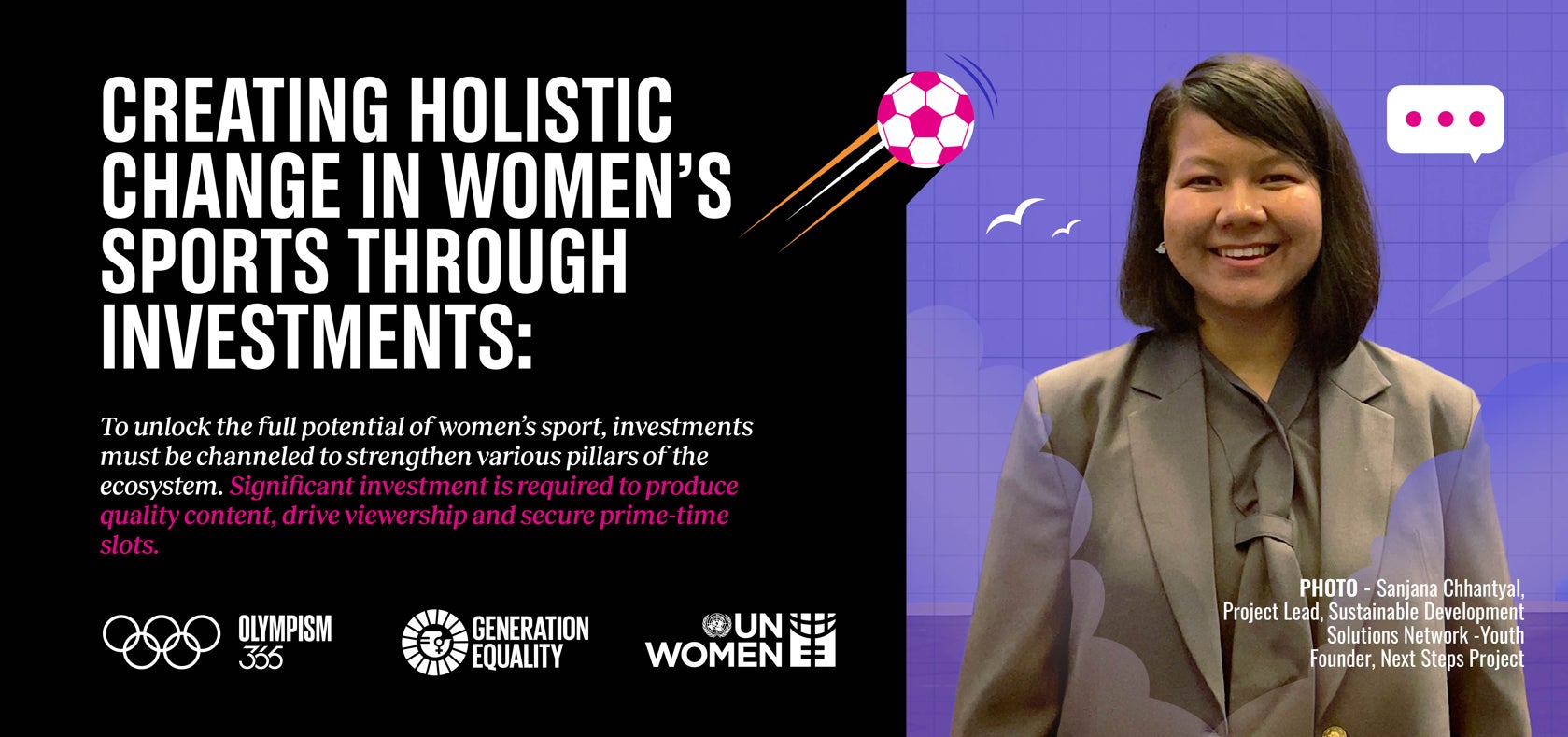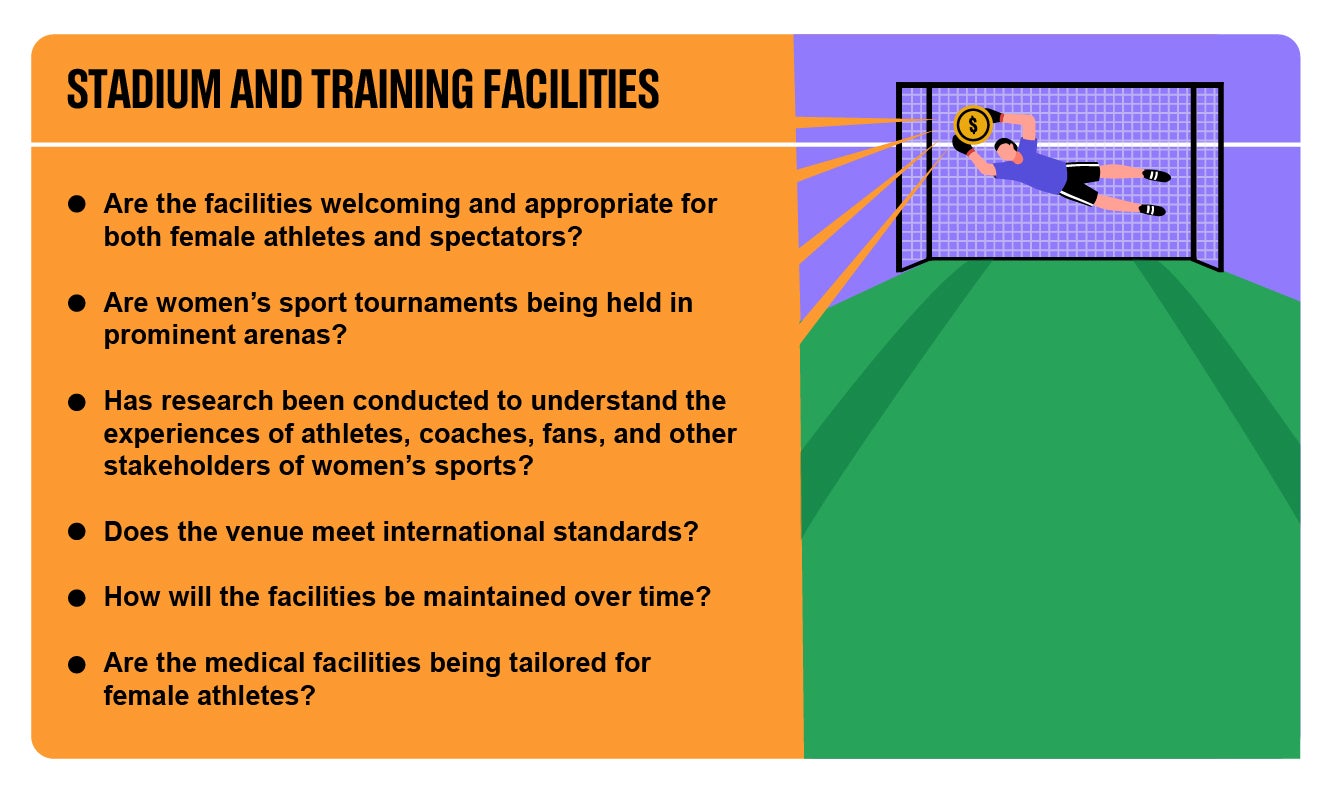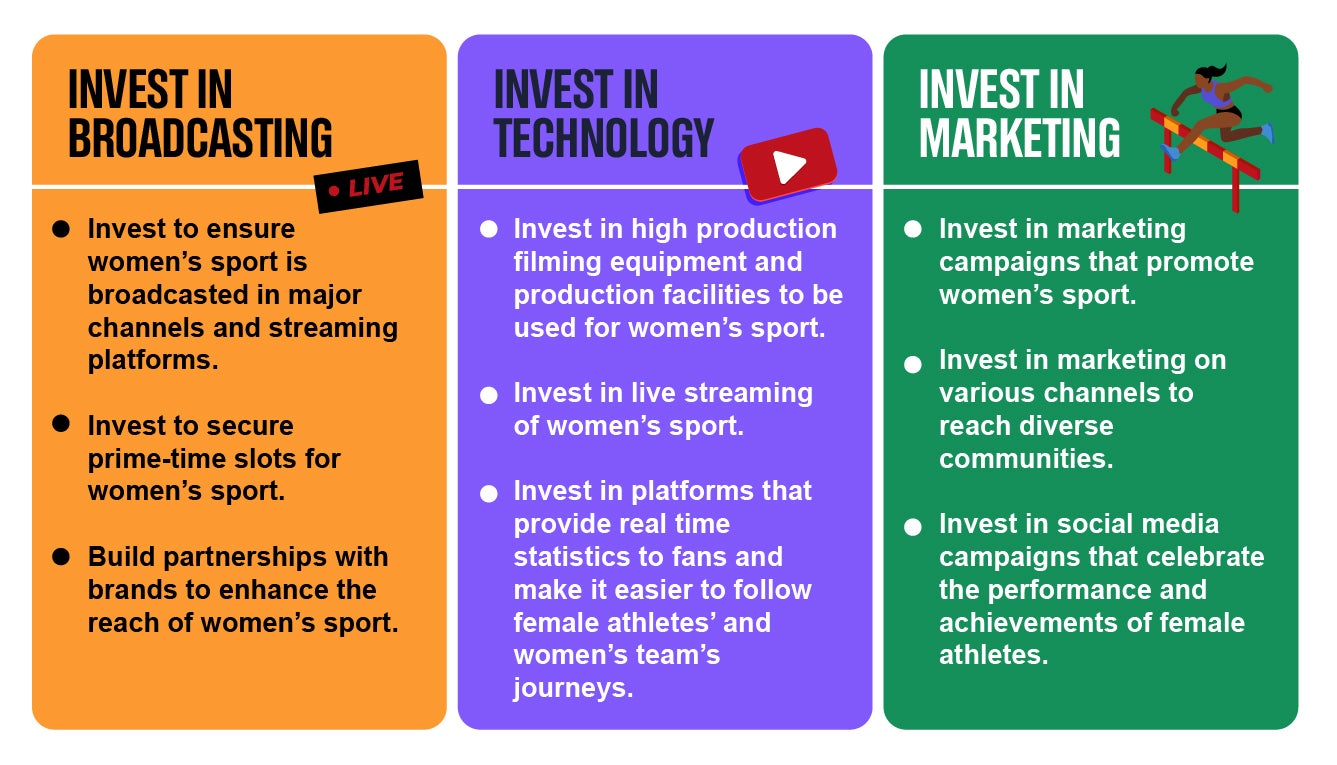Creating holistic change in women’s sports through investment
Date:
Author: Sanjana Chhantyal, Youth Solutions Program Project Lead at Sustainable Development Solutions Network (SDSN)-Youth and 30 for 2030 Leader

At SDSN-Youth, Sanjana leads two global entrepreneurship accelerator programs that have supported youth-led sustainable solutions in over 50 countries. A Fulbright Scholar, Sanjana has previously worked as financial and investment analyst and currently works at Criterion Institute, a non-profit think tank dedicated to expanding possibilities for how finance can be used for social change.
Finance is a transformational tool - the flow of capital influences the trajectory of an industry. An industry has various moving parts that are interconnected. Investing in one part of the ecosystem without considering others can diminish the effectiveness of the investment. A systems-lens enables efficient allocation of resources and helps investors to identify opportunities, minimize risks and maximize impact.
To unlock the full potential of women’s sport, investments must be channeled to strengthen various pillars of the ecosystem. Significant investment is required to produce quality content, drive viewership and secure prime-time slots. Without adequate visibility, fans are unaware when and where to watch women’s sports. This impacts the viewership numbers which then creates an inaccurate perception that there is low demand for women’s sports. This further leads to low advertiser interest thus creating low network interest and in turn, low investment channeled to women’s sports.[1] Additionally, women’s sport being held in under-funded stadiums can lead to diminished fan experience which can lead to lower attendance, and subsequently lower viewership. Thus, intentional investments in various pillars of the ecosystem are imperative to break this cycle.
Invest in female athletes
The pathway to becoming a professional athlete requires hard work, patience, and perseverance. It also requires funding. People often are unable to fully explore their talent in sport due to financial barriers. The high cost of training combined with costs associated with nutrition and health, sports equipment, sports apparel, and access to sport facilities limit participation. Women and girls face additional barriers stemming from a myriad of factors including negative societal norms towards females in sport, families’ reluctance to invest in their future, and a lack of female role models. However, a lack of investment in women’s sport extends beyond athletes. For a holistic development of women’s sports, we must invest in coaches, trainers, journalists, policy makers and so on.
The lack of investment in women’s sport creates financial uncertainty for female athletes and other stakeholders employed in the industry. It is common for athletes to hold other jobs to make a living. This limits athletes from tapping into their true potential. To build a strong pipeline for women athletes and sports professionals increased investment is vital. Some of the ways investment can be made in female athlete development are:


Invest in infrastructure and technology
There’s still a significant gap in the ability to tell data-rich stories about athletes, because women's sports currently haven’t deployed the same advanced technologies as men's sports.1 Women’s sports events being held in smaller, unmaintained, and under-funded facilities can lead to a lackluster in-person and virtual fan experience. Competing in under-resourced venues can be demotivating to the athletes as well.
Investors should assess if their investments are addressing the infrastructural and technological gaps in women’s sports.


Invest in media
Ticket sales and viewership figures are often used as metrics to gauge the popularity of sports. However, the numbers alone do not paint the full picture. Significant investment is required to produce quality content and promote it, so fans are aware of when and where to watch women’s sport whether it is in-person or virtually. If investments in media for women’s sport is limited, it inhibits the reach of the sports. It also limits the teams’ and athlete’s potential to create an engaging brand.


Invest in fan experience
A Sports Innovation Lab's study found that only 36% of fans of women’s sport knew where to find tickets. When fans do attend games, the under-funded infrastructure can lead to a lackluster experience. Fans of women's sports still struggle to find their team’s merchandise; it’s either not in stock, or the options are limited. 1

Ensure investments are not perpetuating existing inequities
Investors can exclude companies from their portfolios that do not adhere to evaluation parameters.[2] Through clauses in investment agreements and tailored metrics, investors can ensure that their investments are challenging and changing the status quo.
Some questions investors can ask as they invest in women’s sports include:
- Are there women leaders in key managerial and decision-making positions in women’s sports organizations?
- Is there transparency and accountability in decision-making processes?
- Do female athletes have the power to negotiate their compensation and sponsorship deals?
- How are female athletes and sports professionals engaged in policy formulation and program design?
- Do women athletes, coaches and other sports professionals feel safe in the workplace? Are there established protocols for them to report incidents of gender-based violence?
- Are women leaders nominated to speak at major events and conferences?
- How does the organization feature female athletes in its marketing campaigns?
Long term investment in women’s sport
In 1900, women competed in the Olympic games for the first time and accounted for 2.2% of the athletes. Over a hundred years later and for the first time ever, in the 2024 Paris Olympics, women will represent 50% of the athletes. As we celebrate this important milestone, we should pause and reflect on how the hundred-year period could be an indicator of the difficultly women in sports have faced.
It is common for investors to expect returns within a short time frame. But creating a deep-rooted change in an industry that has not had the same level playing field for hundreds of years will require long-term capital and tailored financial solutions.
This article is part of the Sports for Generation Equality campaign, that harnesses the voices of women and girls from diverse backgrounds across the Asia and the Pacific, uniting them under the Sports for Generation Equality principles. This Campaign is part of the Bridging project ”Leveraging sports for gender equality, human rights and life free of violence”, a partnership between UN Women and the International Olympic Committee (IOC) a pioneering collaboration to harness the transformative power of sport to advance gender equality and empower women and girls in Latin America, the Caribbean, and Asia and the Pacific regions.
______________________
[1] The ROI of Women’s Sports – A Blueprint for Value Investing by Sports Innovation Lab
[2] Criterion Institute’s GBV Approaches to Investing: ESG Integration